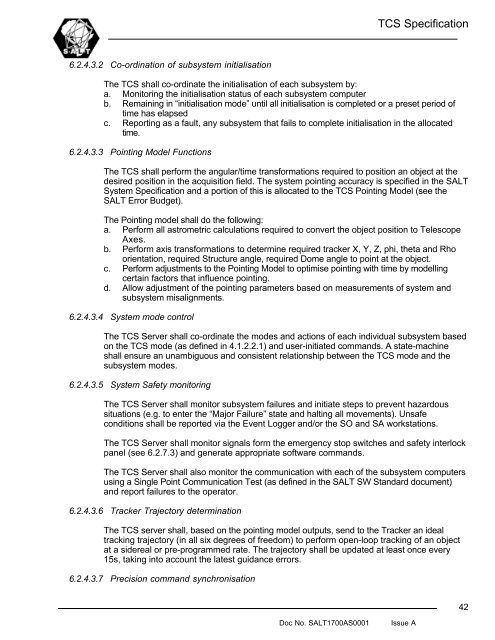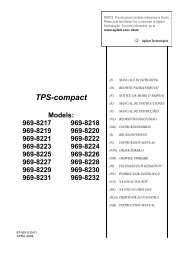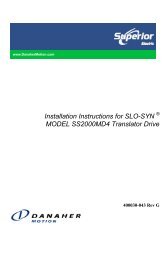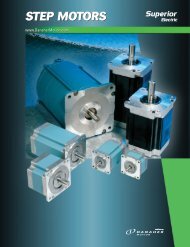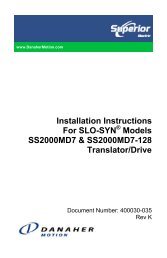1700AS0001 TCS Spec.pdf
1700AS0001 TCS Spec.pdf
1700AS0001 TCS Spec.pdf
You also want an ePaper? Increase the reach of your titles
YUMPU automatically turns print PDFs into web optimized ePapers that Google loves.
6.2.4.3.2 Co-ordination of subsystem initialisation<br />
Doc No. SALT<strong>1700AS0001</strong> Issue A<br />
<strong>TCS</strong> <strong>Spec</strong>ification<br />
The <strong>TCS</strong> shall co-ordinate the initialisation of each subsystem by:<br />
a. Monitoring the initialisation status of each subsystem computer<br />
b. Remaining in “initialisation mode” until all initialisation is completed or a preset period of<br />
time has elapsed<br />
c. Reporting as a fault, any subsystem that fails to complete initialisation in the allocated<br />
time.<br />
6.2.4.3.3 Pointing Model Functions<br />
The <strong>TCS</strong> shall perform the angular/time transformations required to position an object at the<br />
desired position in the acquisition field. The system pointing accuracy is specified in the SALT<br />
System <strong>Spec</strong>ification and a portion of this is allocated to the <strong>TCS</strong> Pointing Model (see the<br />
SALT Error Budget).<br />
The Pointing model shall do the following:<br />
a. Perform all astrometric calculations required to convert the object position to Telescope<br />
Axes.<br />
b. Perform axis transformations to determine required tracker X, Y, Z, phi, theta and Rho<br />
orientation, required Structure angle, required Dome angle to point at the object.<br />
c. Perform adjustments to the Pointing Model to optimise pointing with time by modelling<br />
certain factors that influence pointing.<br />
d. Allow adjustment of the pointing parameters based on measurements of system and<br />
subsystem misalignments.<br />
6.2.4.3.4 System mode control<br />
The <strong>TCS</strong> Server shall co-ordinate the modes and actions of each individual subsystem based<br />
on the <strong>TCS</strong> mode (as defined in 4.1.2.2.1) and user-initiated commands. A state-machine<br />
shall ensure an unambiguous and consistent relationship between the <strong>TCS</strong> mode and the<br />
subsystem modes.<br />
6.2.4.3.5 System Safety monitoring<br />
The <strong>TCS</strong> Server shall monitor subsystem failures and initiate steps to prevent hazardous<br />
situations (e.g. to enter the “Major Failure” state and halting all movements). Unsafe<br />
conditions shall be reported via the Event Logger and/or the SO and SA workstations.<br />
The <strong>TCS</strong> Server shall monitor signals form the emergency stop switches and safety interlock<br />
panel (see 6.2.7.3) and generate appropriate software commands.<br />
The <strong>TCS</strong> Server shall also monitor the communication with each of the subsystem computers<br />
using a Single Point Communication Test (as defined in the SALT SW Standard document)<br />
and report failures to the operator.<br />
6.2.4.3.6 Tracker Trajectory determination<br />
The <strong>TCS</strong> server shall, based on the pointing model outputs, send to the Tracker an ideal<br />
tracking trajectory (in all six degrees of freedom) to perform open-loop tracking of an object<br />
at a sidereal or pre-programmed rate. The trajectory shall be updated at least once every<br />
15s, taking into account the latest guidance errors.<br />
6.2.4.3.7 Precision command synchronisation<br />
42


